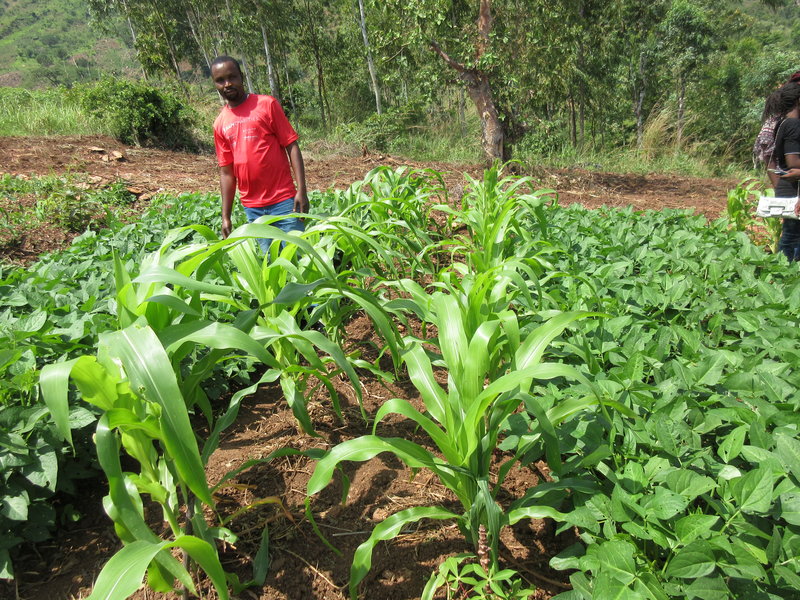As the planting season approaches in April, farmers can reduce commercial fertilizer dependency by using green legume manures in their farms.
Intercropped green legume manures produce 800-1600kg per acre of material which decays to provide 20-36kg of Nitrogen. This amount is equal to 80-150kg of Calcium Ammonium Nitrate or 1.5 -three bags of CAN. Maize for instance requires 24 kilos of Nitrogen per acre (about two bags of CAN) and so the GLMs in this system supply enough Nitrogen for the maize crop.
In this, farmers can save Sh3200 per acre used in purchasing CAN from the market as a 50kg bag retails at Sh1600 with an acre of land requiring two bags.
Green legumes are plants that contain Nitrogen in their stem and leaves which is released into the soil when the plants decay. Nitrogen it is a major component of chlorophyll, the compound by which plants use sunlight energy to produce sugars from water and carbon dioxide (i.e., photosynthesis). It is also a major component of amino acids, the building blocks of proteins. Without proteins, plants wither and die.
Mucuna (velvet beans) and crotalaria (sun hemp) are some of the examples of green legumes used in the making manure.
In maize farming, the green legumes are intercropped with maize. Maize seeds are planted at a spacing of 75cm by 50cm then one row of the green legume is planted in between maize rows. For mucuna plant two to three centimeters in every 30cm. Clotaralia are drilled in furrows at the rate of 15kg/acre.
The legumes can be planted on the same day or two weeks after planting maize and in this case no nitrogenous fertilizers are applied on the legumes.
When the maize matures, harvest the cobs and stovers and leave the legumes in the field to be uprooted after all harvesting is done. The residues are then applied either as mulch or chopped and incorporated into the soil in readiness for planting the next season’s maize.
Related content
Biocatalyst that slices manure composting time by half
Combining manure and fertilizer doubles crop yields
Farmer earns from rearing red worms for organic manure
Maize intercropped with legumes
In February, the government said that due to procurement errors from the contracted firms it will not import fertilizer; therefore, farmers had to buy fertilizer from the open market. This will, in turn, lead to a rise in the product rising to Sh3000 for a 50kg bag compared to Sh1200 for the same quantity last year.
“The National Cereals Produce Board typically helps to uphold lower fertilizer through the supply of the subsidised fertilizer but now that there will be no importation, the prices are likely to skyrocket during the planting season,” said Kipkorir Menjo, the director of the Kenya Farmers Association in a press conference in Eldoret last month.
In the 2019 planting season farmers are currently purchasing a 50kg bag of DAP fertilizer at a market rate of Sh3000 to Sh3300 after the government failed to subsidise the prices.
While last year, delays by the Kenya Bureau of Standards to release 1.6m tonnes of fertilizer, which were stuck at the Mombasa Port, 750,000 metric tonnes at the Elgon Kenya warehouse while 880,000 tonnes at a warehouse in Yala, as they were awaiting inspection were expected to delay production.

















Comments powered by CComment